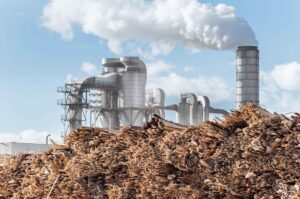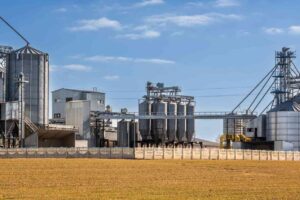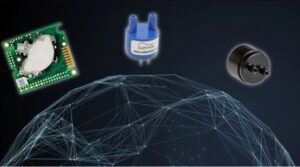In today’s world, environmental pollution problems have attracted more and more attention. With the rapid development of industrialization and urbanization, the types of pollutants in the atmosphere are also increasing. Among them, volatile organic compounds (Volatile Organic Compounds, referred to as VOCs) are a type of pollutants that have attracted much attention.

VOCs not only have a negative impact on human health, but also have an important impact on the atmospheric environment and global climate. Therefore, developing emerging pollutant monitoring strategies, taking VOCs as an example, has become a hot topic in the field of environmental science. This article will introduce emerging pollutant monitoring strategies and use VOCs as a case to discuss how to monitor and manage this type of pollutants more effectively.
Part 1: Sources and hazards of VOCs
First, let’s understand the sources and hazards of VOCs. VOCs are a class of hydrocarbons whose main sources include industrial processes, vehicle emissions, chemical manufacturing, printing and painting, etc.. After they volatilize in the atmosphere, Reacts with nitrogen oxides (NOx) to form ozone and fine particulate matter, which poses a threat to both air quality and human health. In addition, some VOCs are toxic and may have adverse effects on the ecosystem. Therefore, effective monitoring and control of VOCs emissions is crucial.

Part 2: Limitations of traditional monitoring methods
Traditional VOCs monitoring methods usually rely on gas sampling and mass spectrometry instrument analysis. Although these methods perform well in terms of accuracy and reliability, they have some limitations:
- Expensive: Gas sampling and mass spectrometry equipment are often expensive and require specialized skills to operate and maintain, which is a burden for many regions and institutions.
- Complexity: Traditional methods require complex sample processing and analysis steps, high time and labor costs, and are not suitable for large-scale monitoring.
- Limited monitoring network: Due to equipment cost and complexity, traditional methods often cannot establish an extensive monitoring network, which may result in insufficient monitoring coverage.
Part 3: Emerging Pollutant Monitoring Strategies
3.1 Emerging monitoring strategies
As technology advances, several emerging contaminant monitoring strategies have emerged to address the limitations of traditional methods. The following are some emerging monitoring strategies, taking VOCs as an example:
- Meteorological observation station: Meteorological observation station can not only monitor atmospheric temperature and humidity, but also monitor VOCs concentration. This method takes advantage of the wide distribution of weather stations to establish a relatively comprehensive monitoring network to monitor the concentration changes of VOCs in real time.
- Drone technology:Developments in drone technology allow aerial surveillance to be easily implemented.Drones equipped with VOCs sensors can fly over different areas and collect atmospheric samples to gain a more comprehensive understanding of the distribution of VOCs.
- Sensor network: Small, portable VOCs sensors are already available. These sensors can be deployed in key locations such as cities, factories and traffic arteries to monitor VOCs concentrations in real time and transmit the data to a central database for analysis and decision-making.
- Data science and artificial intelligence: Data science and artificial intelligence technologies can help process large amounts of monitoring data and provide real-time warnings and trend analysis. This helps to better understand the behavior and impact of VOCs.

3.2 Use gas analyzer for VOCs detection
With the advancement of technology, some emerging pollutant monitoring strategies have emerged, one of which is the use of gas analyzers for VOCs detection. These instruments have unique advantages in detecting VOCs. Here is some key information:
- Detection principle
Gas analyzers use different detection principles to measure the concentration of VOCs. in, Gas Chromatography (GC) is a commonly used method. GC separates a gas sample into its different components and then uses a detector to quantitatively measure the concentration of each component. The advantage of this method is that a wide range of VOCs can be separated and measured, making it a widely used tool.

- Instrument type
Gas analyzers can be divided into many types according to different detection principles and application fields. For example, gas chromatography-mass spectrometry (GC-MS) combines gas chromatography and mass spectrometry technologies to provide high-resolution and high-sensitivity measurement capabilities and is suitable for the analysis of complex VOCs samples. Gas chromatography fluorescence detection (GC-FID) can be used for routine VOCs monitoring.
- Sample collection and preparation
Before using a gas analyzer for VOCs detection, sample collection and preparation are required. This includes collecting atmospheric samples, introducing them into instruments, removing interfering substances, etc. Sample collection methods and preparation steps will depend on the specific monitoring needs and instrument type.
- Data analysis and reporting
The data generated by gas analyzers can be processed and analyzed through data science and artificial intelligence techniques. These tools can provide real-time data warnings, trend analysis and report generation to help decision-makers better understand the behavior and impact of VOCs.
The use of gas analyzers for VOCs detection has the advantages of high sensitivity, high accuracy and real-time performance, making it widely used in environmental monitoring, industrial process control, indoor air quality monitoring and other fields. These instruments can help monitor the emission of VOCs to ensure that environmental quality and personnel health are effectively protected.
Part 4: Future Outlook
Emerging pollutant monitoring strategies, taking VOCs as an example, are changing our understanding and management of environmental pollution. The application of these strategies allows us to monitor the distribution and concentration of VOCs more comprehensively and in real time, helping to take timely measures to reduce their impact on air quality and health.
In the future, we can expect more innovations and developments to further improve the accuracy and operability of emerging contaminant monitoring strategies. At the same time, governments, businesses and the public need to work together to formulate stricter pollution control policies and emission reduction measures to reduce VOCs emissions and protect the environment and human health.
Conclusion
Emerging pollutant monitoring strategies, especially taking VOCs as an example, are changing the way we understand and manage environmental pollution. Among them, the use of gas analyzers for VOCs detection is an important technological innovation, providing us with a more powerful, more efficient, and more reliable monitoring tool.
Through gas analyzers, we can monitor the concentration of VOCs with unprecedented accuracy and real-time. Not only that, these instruments are also able to analyze mixtures of multiple VOCs, giving us a more comprehensive understanding of the composition of pollutants in the atmosphere. This is critical for developing more effective environmental policies and pollution control measures.
In addition, the development of gas analyzer technology will also help expand the coverage of monitoring networks. This means that we can introduce VOCs monitoring to more regions and fields to better protect the environment and human health.
Taken together, the use of gas analyzers for VOCs detection represents an important advance in emerging pollutant monitoring strategies that will continue to advance the field of environmental science and pave the way for a cleaner, healthier future for our planet. solid foundation. We look forward to future developments that will continue to drive progress in this field to address environmental pollution challenges and achieve sustainable development goals. If you have any questions, please feel free to contact us!

























